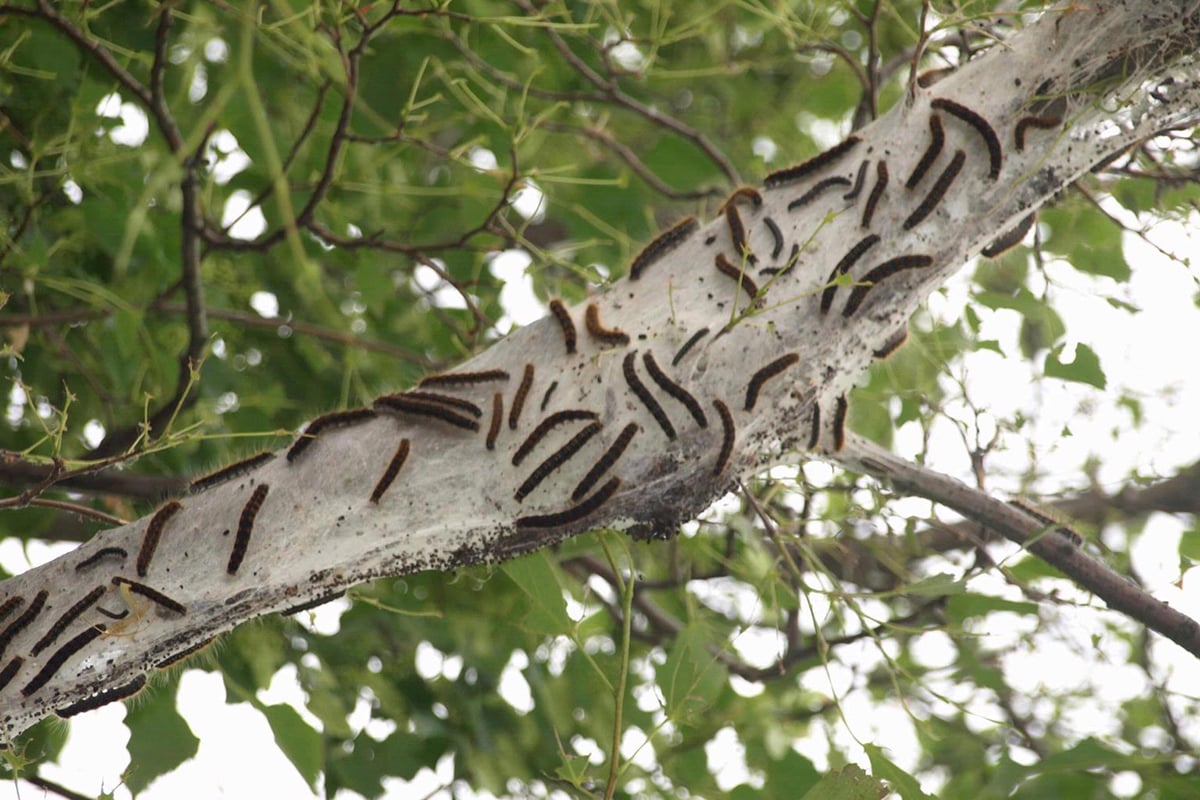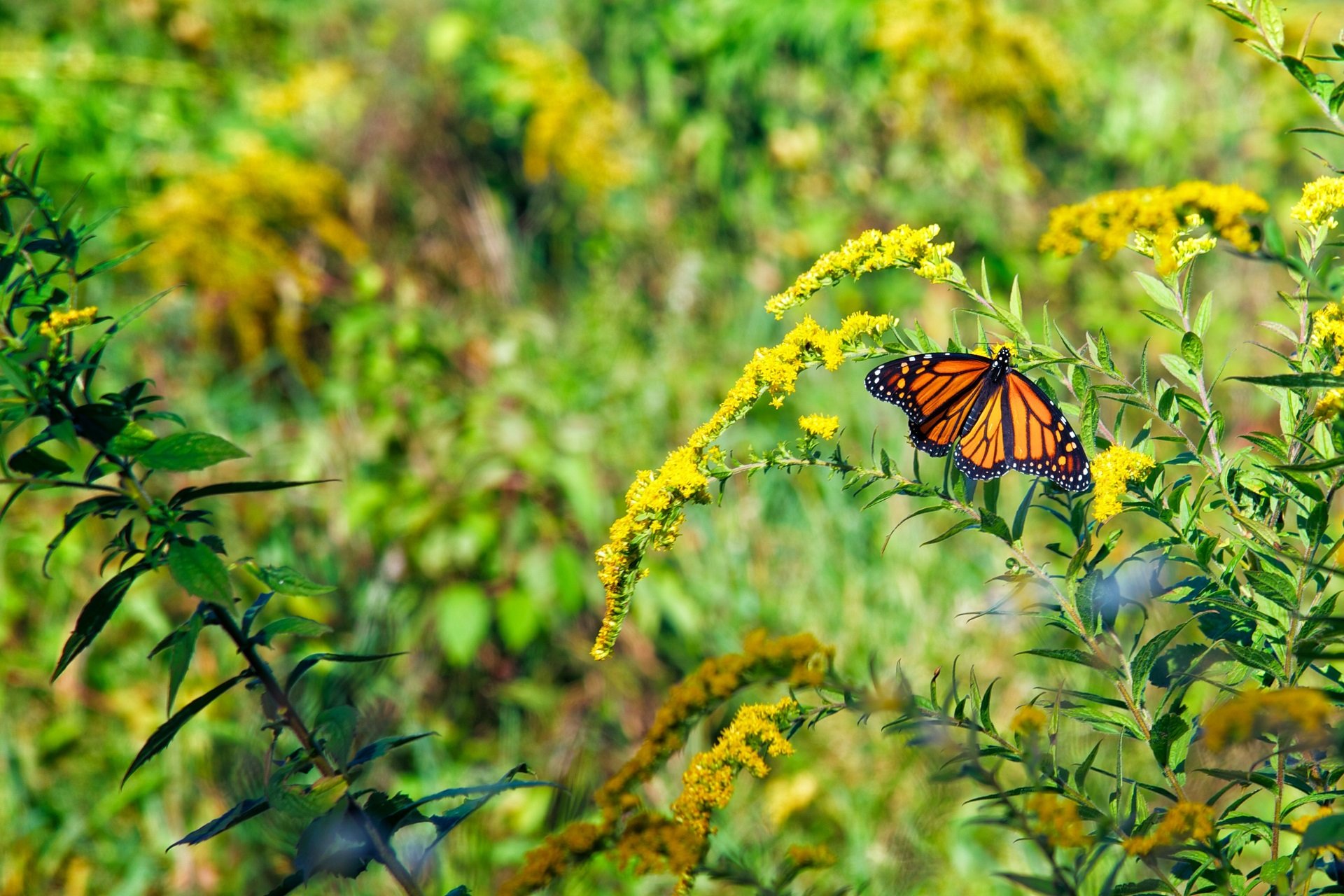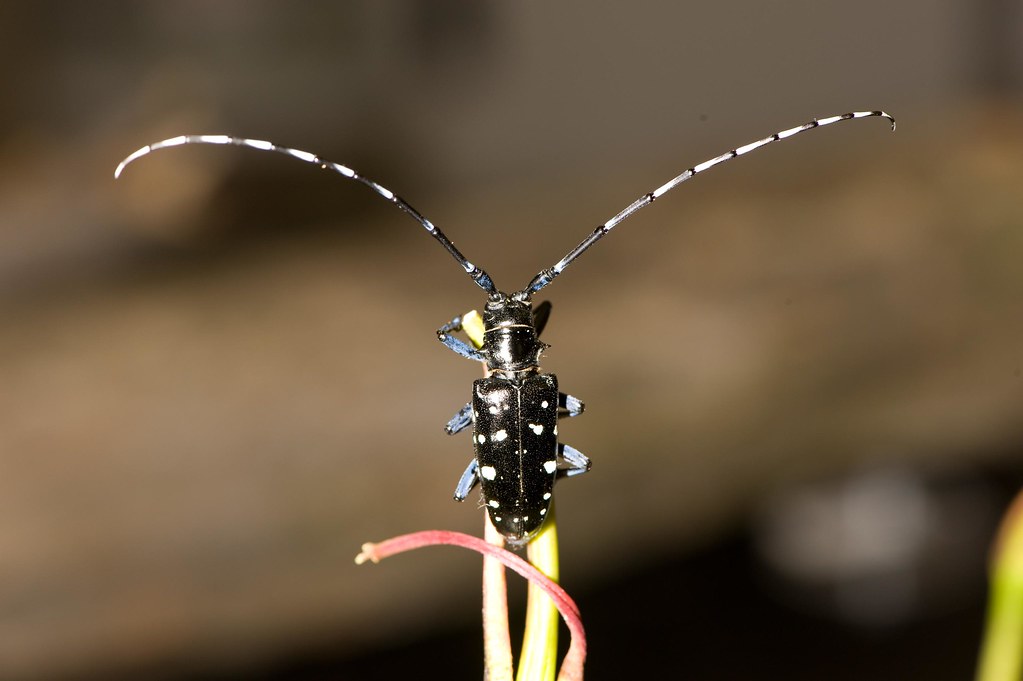Insects & Arachnids
Native Nuisance Moths
There are well over 1,000 species of moths in New England, and most of them are native and pose no threat. In fact, many of them are quite beautiful!
And while there are some native moth species that defoliate trees, the damage is typically aesthetic and not harmful to the overall health of the tree.
Here are a few of the more conspicuous native species that are considered "nuisance" moths:
Eastern Tent Caterpillar (Malacosoma americanum)
A native species, it makes a silken nest in the crotches of cherries, apples, and other trees in the rose family. Tent caterpillars hatch early (about mid-April) and become conspicuous by May when they begin spinning the silken "tent" for shelter.
They feed on leaves outside the web and return for shelter from predators and warmth on cool days. Damage is mainly to ornamental trees, and these typically re-foliate once the caterpillars have abandoned the tent.
Fall Webworm (Hyphantria cunea)
Unlike the Eastern Tent caterpillar, this native species constructs its tent over entire branches—sometimes entire trees—rather than enveloping just the crotches. The caterpillars feed on the leaves inside the web, extending it as necessary.
They are known to feed on over 400 species of woody plants. As the name implies, the webs appear in late summer and fall. The effect of an infestation is mainly aesthetic and limited in area with no lasting damage to healthy trees. Learn more
Spring & Fall Cankerworms (Paleacrita vernata & Alsophila pometaria)
Though native, these two species are very similar to the winter moth (and to each other) in their caterpillar and adult appearance, as well as in their behavior. They are "irruptive" and in certain years can cause serious defoliation over large areas.
Stay Connected
Don't miss a beat on all the ways you can get outdoors, celebrate nature, and get involved.






